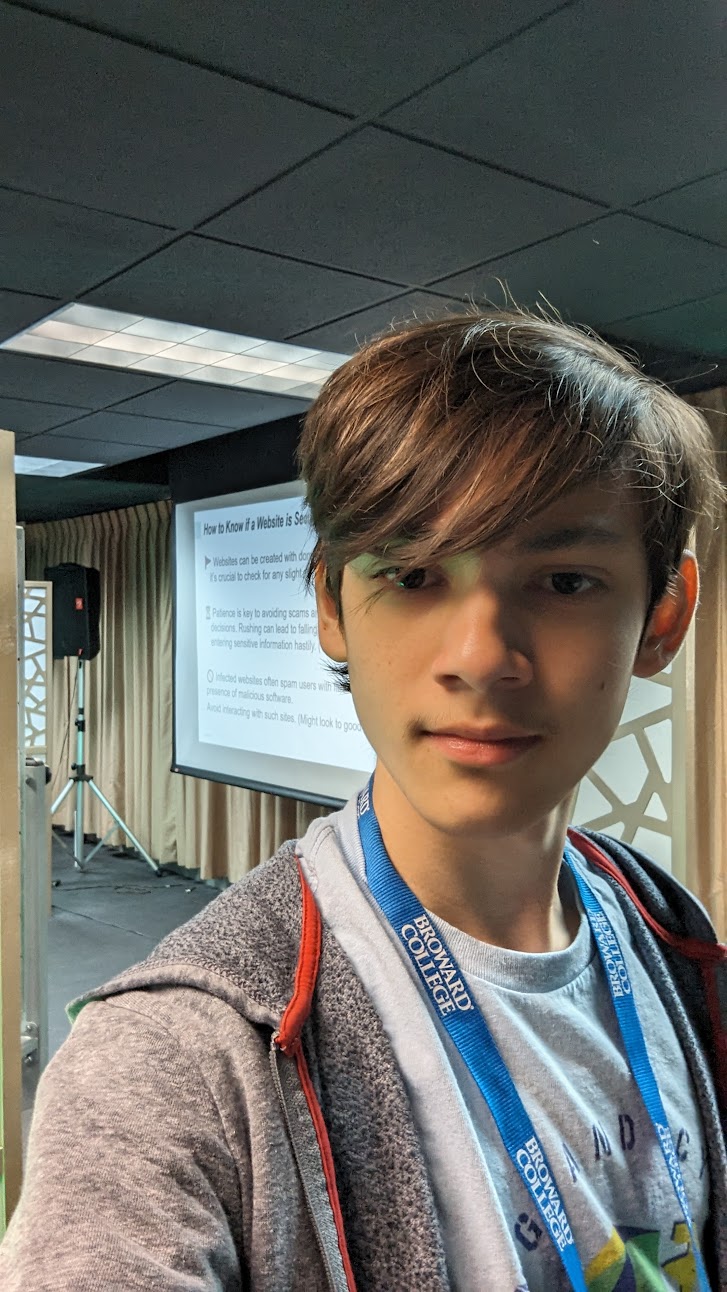Welcome to my website!
Thank you for visiting my homepage, designed as a homage to late 90s/early 2000s web aesthetics.
I created this website to document myself. I've always been one to enjoy the history of computing, so I built this site to reflect that.
This page is released under the MIT license; software is better when it's free as in freedom.
About Me
I'm Ryan Samuels, a student currently attending the University of Florida studying Computer Engineering.
I am interested in computer science, cybersecurity, and electrical engineering.
Certifications:
- CompTIA Linux+ XK0-005
- CompTIA Security+ SY0-701
- CompTIA A+ 110x
- Comptia Network+ N10-009
- ITS Software Development
- ITS Python
- ITS Device Configuration and Management
- ITS Network Security
- ITS Artificial Intelligence
- ITS Java
- Microsoft Certified: Azure AI Fundamentals
Skills:
- Python
- C
- Docker
- Java
- Networking
- Nix Language
I also have a cat who I love dearly. Her name is Cappy, and I adopted her back in 2019. She's been family since.

Projects and Activities
Homelab
I've built and manage my own homelab server. I host various services such as my own DNS server through Pi-Hole, and various media automation tools.
As of currently, I use Kubernetes k8s to manage all my services. My media stack comprises of Radarr, Sonarr, Bazarr, Prowlarr, Jellyfin, Jellyseer, and a Real-Debrid client.
Many of my front-end services like Jellyfin and Jellyseer, and some other websites are hosted publically on this domain.
Internal access like with SSH is done through Tailscale.
In the future, I plan to move to a more powerful server, perhaps rack mounted. While my current one has been doing great for a while, I wish to do more virtualization, which my current server is not built for.
Specs:
- Motherboard: Supermicro X10SLL-F
- CPU: Xeon E3-1240v3
- GPU: SPARKLE Intel Arc A310 Eco (image shows a Nvidia M2000, but it's outdated)
- RAM: 32GB UDIMM ECC DDR3
- Storage: 4x 4TB SAS Drives in a Raidz2 array | Ace A55 SSD boot drive
- Case: Cooler Master N400
- SAS Controller: ASR-7805
- PSU: Thermaltake Smart 500w
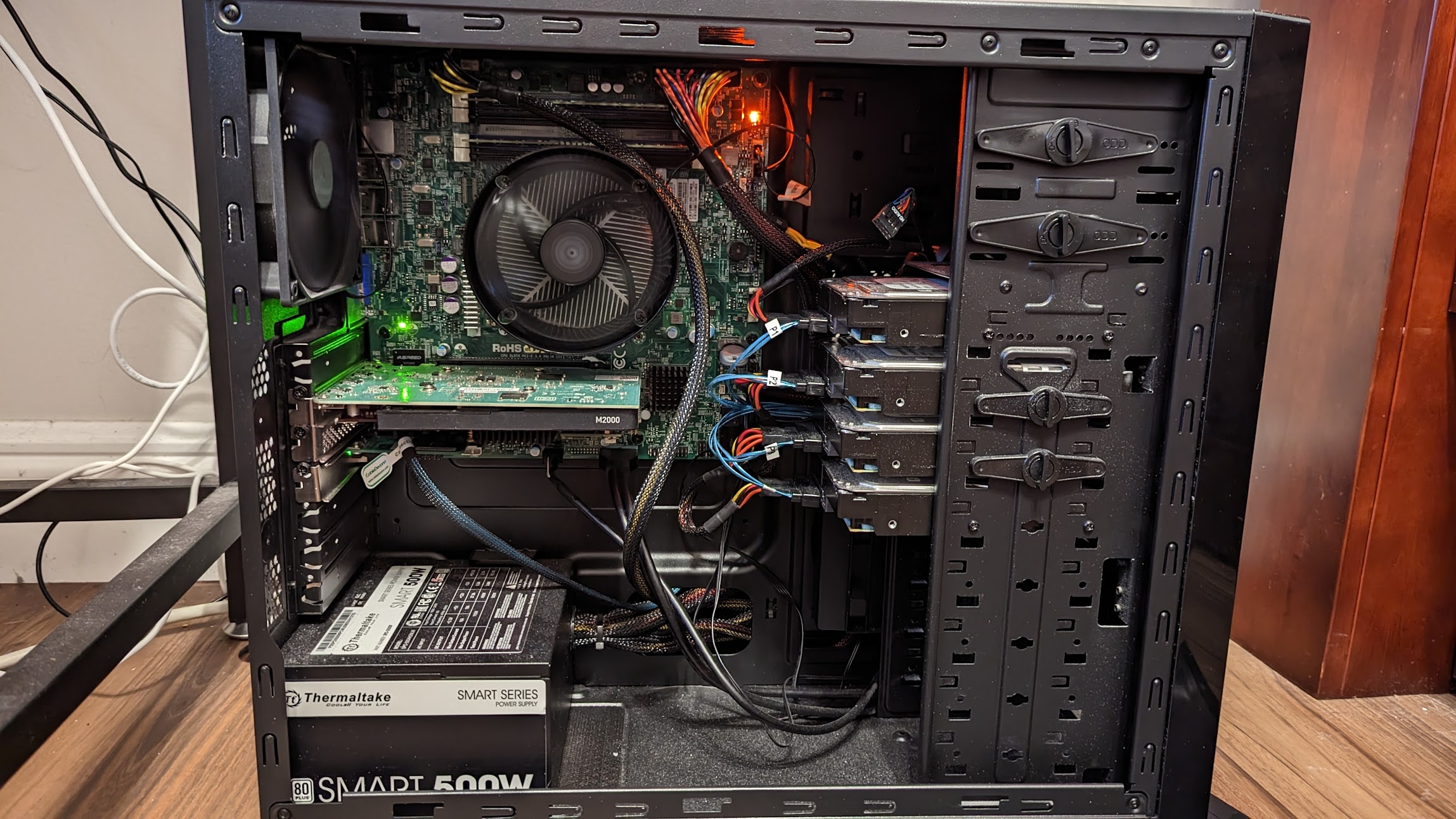
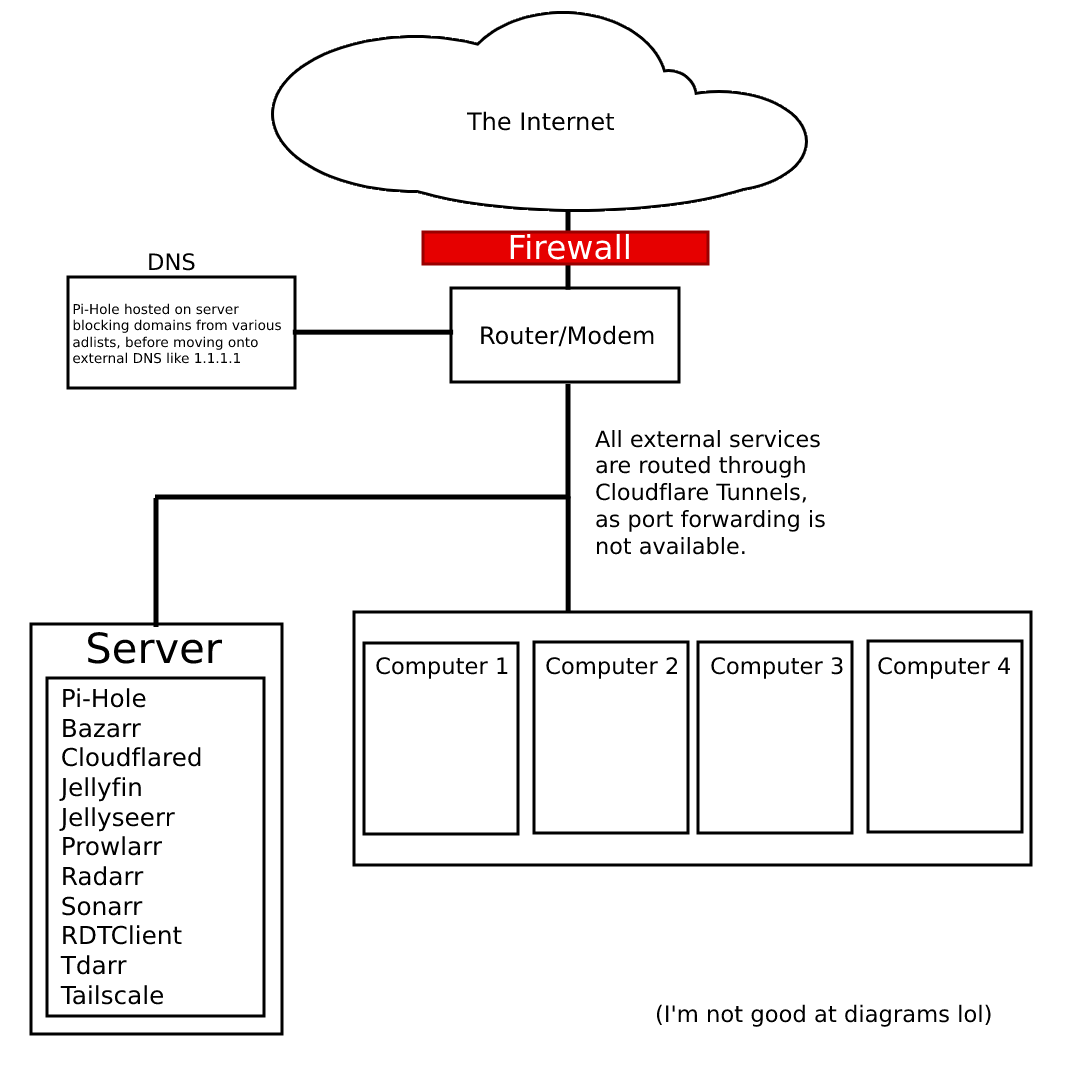
High School Hall Pass App
I was the sole developer for my high school's hall pass application. This app allows students to create passes, and for staff to view passes they've authorized.
The app is written in Python, HTML, CSS, and Javascript. The back end uses the Django framework.
It uses a Redis and SQLite database for important pass functions. Redis is used by Celery to manage pass expiration through timed jobs, and the SQLite database holds important pass information and user accounts.
The WSGI server used is Gunicorn, which is routed through NGINX and then through Cloudflare Tunnels.
The source code is now available here: https://github.com/returnofblank/NovaPassApp.
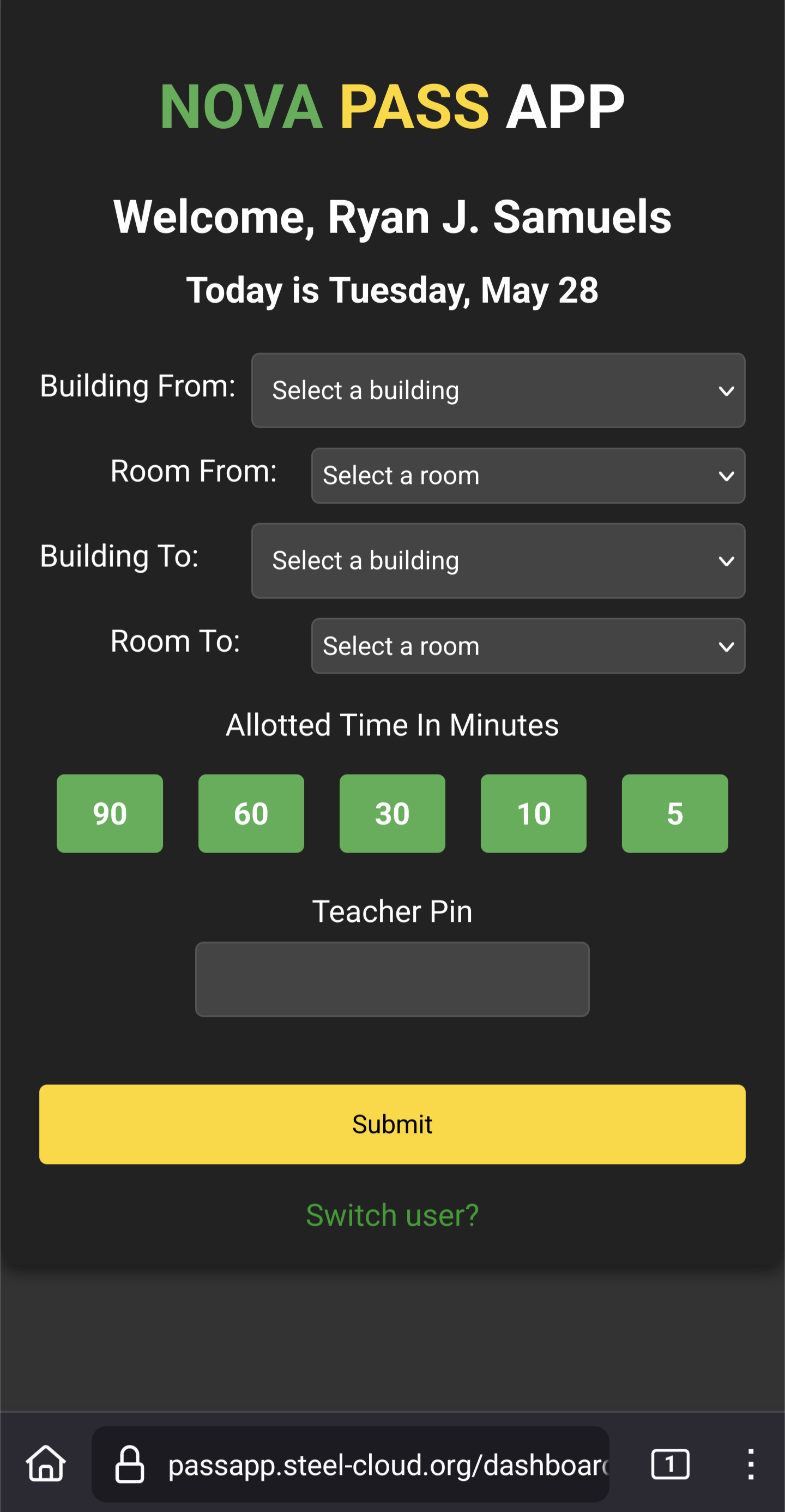
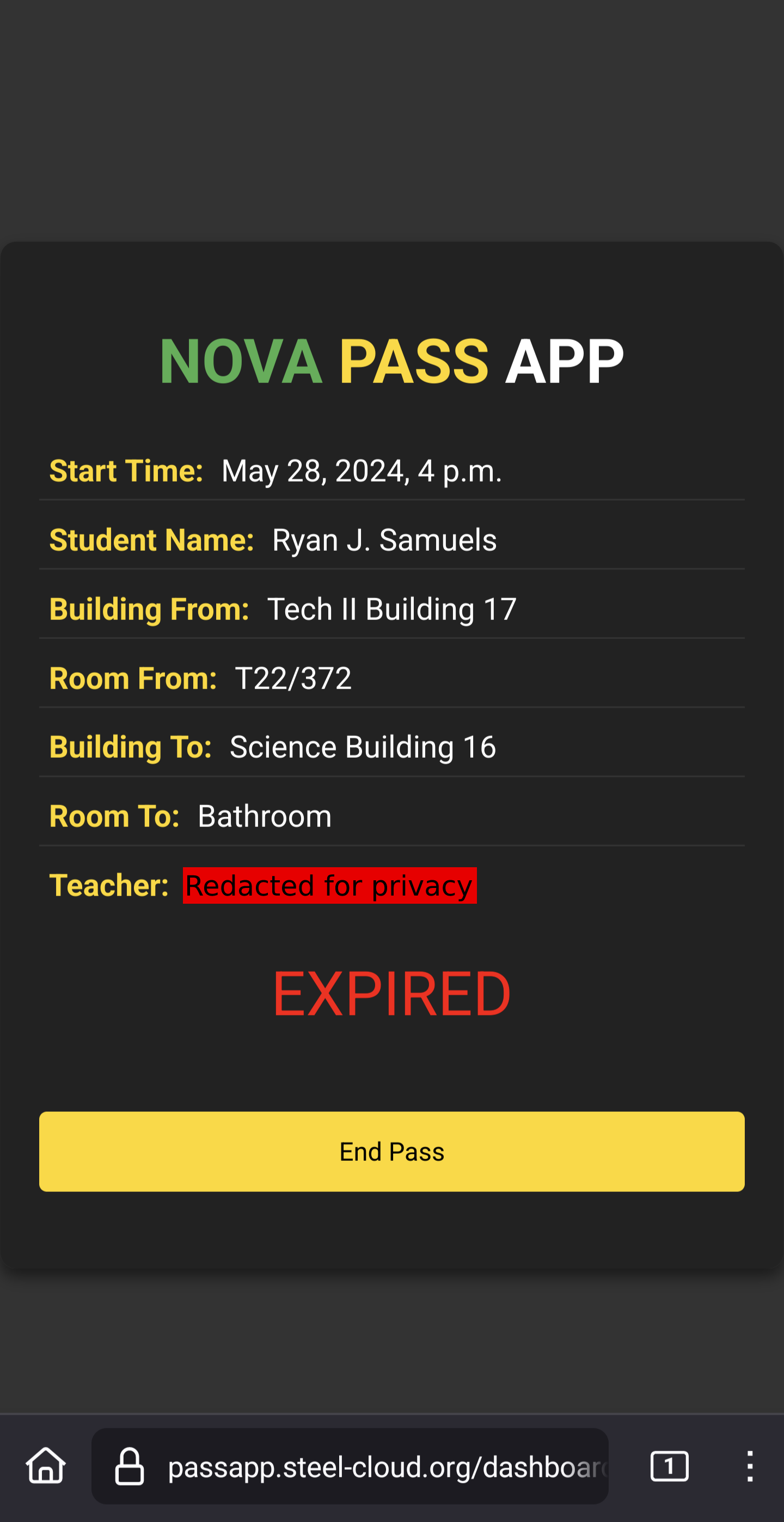
Cyber Patriot
CyberPatriot is an annual competition where student teams identify and fix cybersecurity vulnerabilities in virtual systems. It progresses from online qualifying rounds to a National Finals event, featuring hands-on challenges that simulate real-world scenarios.
A typical Cyber Patriot competition will have a Linux VM, a Windows Server VM, and a Windows 10/11 VM.
After every competition round, there is a leaderboard put in place ranking a team's score in solving vulnerabilities.
I have consistently scored within the top 5 in my state for the Linux virtual machine, sometimes placing 1st on some rounds.
I have also developed a bash script for automating many parts of securing a Linux system for this competition. However, for the sake of competition integrity, the script is not publicly available.
The script uses the `dialog` package to offer a text user interface (TUI). This allows users to select what patches they wish to apply in a menu.
The script is made entirely with bash and uses no other language.
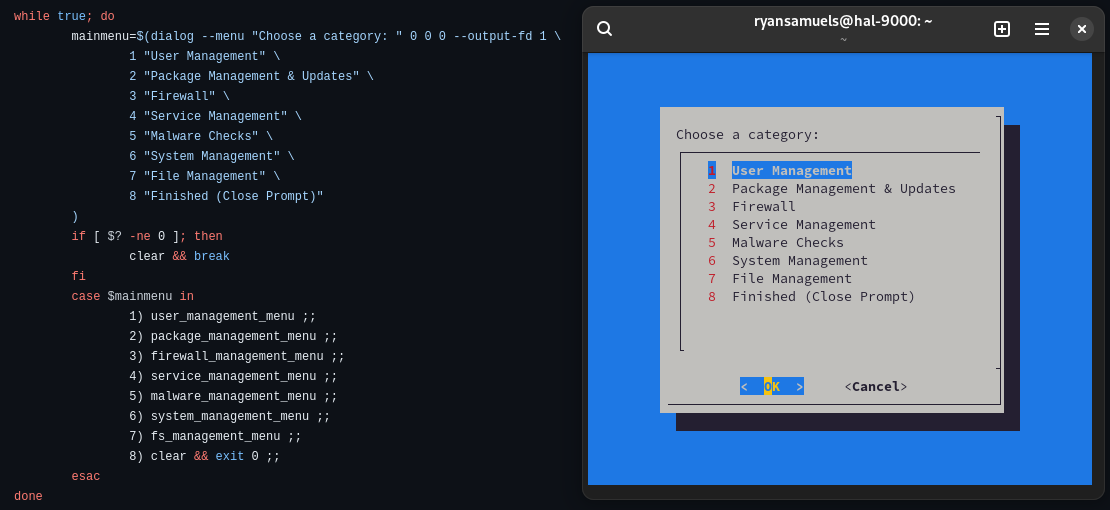
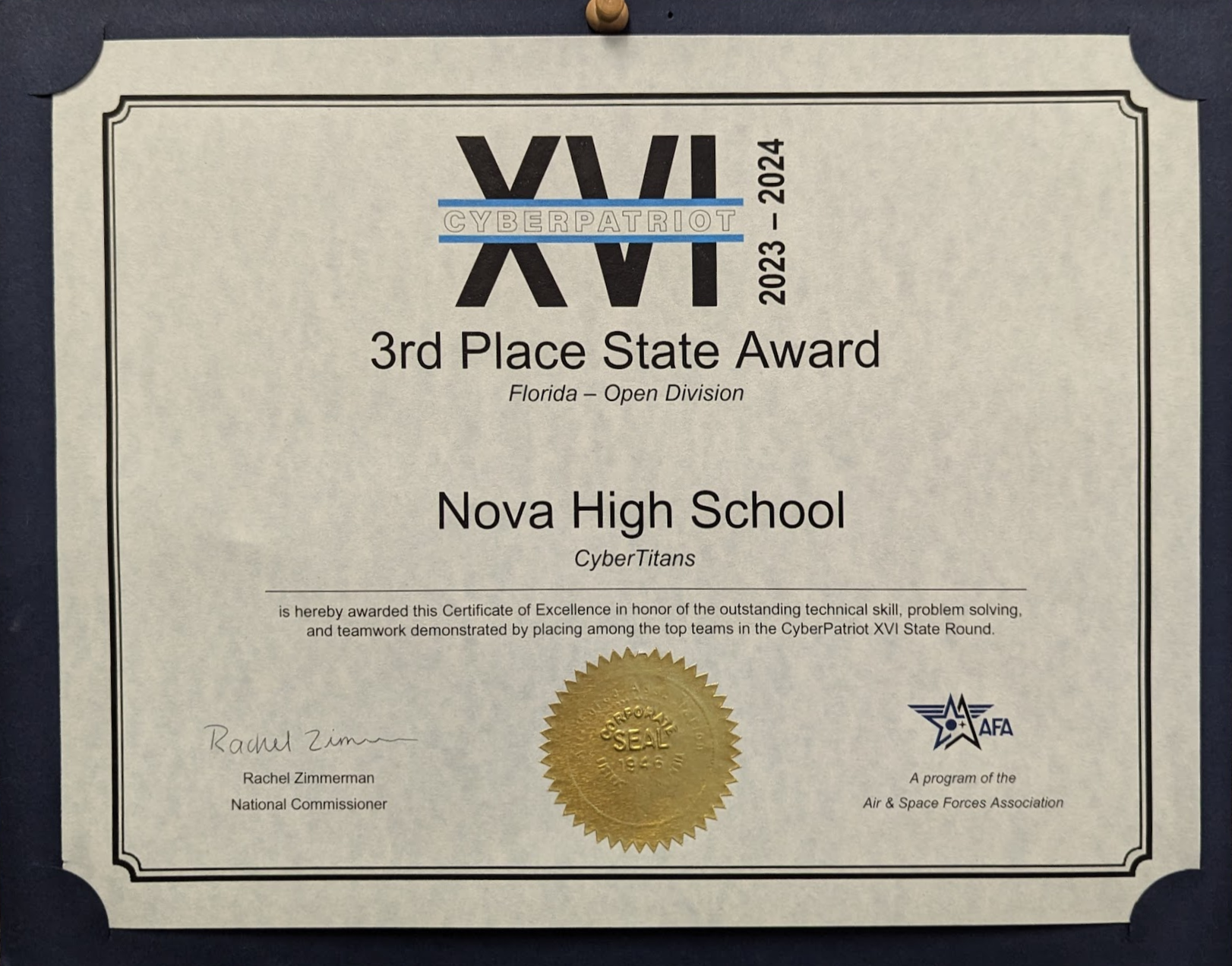
CompTIA Cram Sheets
I have created cram sheets, or study guides, for various CompTIA exams. Such exams include the Security+, Network+, and Linux+.
They are designed to be printed out on a single page of A3 paper, 11x17.
While these cram sheets do not contain everything you need to know for the exam, they do contain what is most important you know.
The cram sheets have a heavy focus on acronyms and vocabulary, but they also contain important concepts you will need to know.
Below, there will be a download link for the Security+, Network+, and Linux+. These are .docx files, so formatting may need to be fixed in post (Word browser versus Word desktop formats differently for some reason).

Cybersecurity Education at Senior Living Facility
As part of my high school's cybersecurity program, I participated in an outreach initiative to teach online safety to residents at a local senior living facility in April 2024.
Our interactive presentation covered essential cybersecurity topics including:
- Password creation and management strategies
- Identifying phishing attempts through email and phone
- Recognition of common online scams
- Engaging cybersecurity trivia
I provided one-on-one assistance to residents, helping them understand and implement these safety measures in their daily online activities.
I don't have many photos of this event, so below is a picture of me standing back stage during the presentation.
